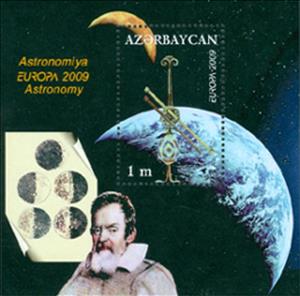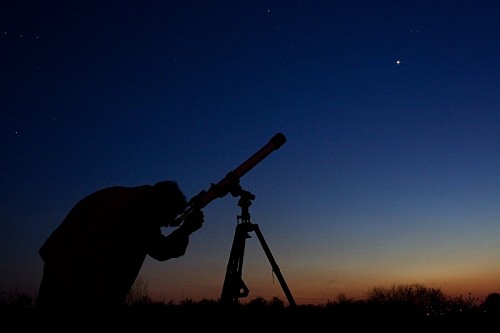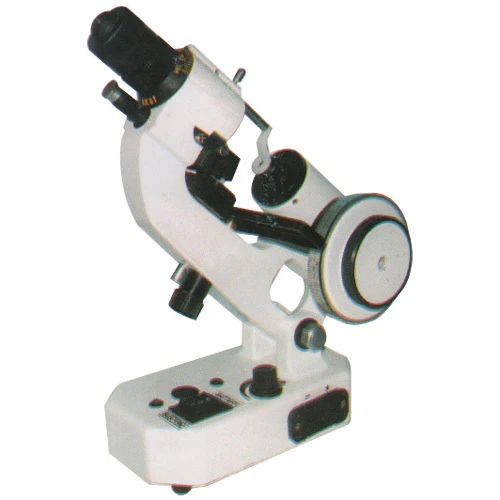Souvenir Sheet: First Telescope Invented by Galileo Galilei, 1609 (Azerbaijan 2009)
First Telescope Invented by Galileo Galilei, 1609 (Azerbaijan 2009)
13 April (Azerbaijan ) within release Europa (C.E.P.T.) 2009 - Astronomy goes into circulation Souvenir Sheet First Telescope Invented by Galileo Galilei, 1609 face value 1 Azerbaijani manat
| Souvenir Sheet First Telescope Invented by Galileo Galilei, 1609 in catalogues | |
|---|---|
| Michel: | Mi: AZ BL85A |
| Stanley Gibbons: | Sg: AZ MS737 |
Souvenir Sheet is square format.
Also in the issue Europa (C.E.P.T.) 2009 - Astronomy:
- Souvenir Sheet - First Telescope Invented by Galileo Galilei, 1609 face value 1;
- Stamp - Nasiruddin Tusi (Astronomer) face value 20;
- Stamp - Nasiruddin Tusi (Astronomer) face value 20;
- Booklet Pane - Nasiruddin Tusi + Observatory, Shemakhi Region face value 3.20;
- Booklet - Nasiruddin Tusi + Observatory, Shemakhi Region face value 3.20;
- Stamp - Observatory, Shemakhi Region face value 60;
- Stamp - Observatory, Shemakhi Region face value 60;
- Full Pane - Nasiruddin Tusi (Astronomer) face value 10*20;
- Full Pane - Observatory, Shemakhi Region face value 10*60;
Souvenir Sheet First Telescope Invented by Galileo Galilei, 1609 it reflects the thematic directions:
An astronomer is a scientist in the field of astronomy who focuses their studies on a specific question or field outside the scope of Earth. They observe astronomical objects such as stars, planets, moons, comets and galaxies – in either observational (by analyzing the data) or theoretical astronomy. Examples of topics or fields astronomers study include planetary science, solar astronomy, the origin or evolution of stars, or the formation of galaxies. A related but distinct subject is physical cosmology, which studies the Universe as a whole
Astronomy is a natural science that studies celestial objects and the phenomena that occur in the cosmos. It uses mathematics, physics, and chemistry in order to explain their origin and their overall evolution. Objects of interest include planets, moons, stars, nebulae, galaxies, meteoroids, asteroids, and comets. Relevant phenomena include supernova explosions, gamma ray bursts, quasars, blazars, pulsars, and cosmic microwave background radiation. More generally, astronomy studies everything that originates beyond Earth's atmosphere. Cosmology is a branch of astronomy that studies the universe as a whole. .
Famous People refers to the fame and public attention accorded by the mass media to individuals or groups or, occasionally, animals, but is usually applied to the persons or groups of people (celebrity couples, families, etc.) themselves who receive such a status of fame and attention. Celebrity status is often associated with wealth (commonly referred to as fame and fortune), while fame often provides opportunities to make money.
An optical instrument is a device that processes light waves (or photons), either to enhance an image for viewing or to analyze and determine their characteristic properties. Common examples include periscopes, microscopes, telescopes, and cameras.
Outer space (or simply space) is the expanse that exists beyond Earth's atmosphere and between celestial bodies. It contains ultra-low levels of particle densities, constituting a near-perfect vacuum of predominantly hydrogen and helium plasma, permeated by electromagnetic radiation, cosmic rays, neutrinos, magnetic fields and dust. The baseline temperature of outer space, as set by the background radiation from the Big Bang, is 2.7 kelvins (−270 °C; −455 °F)





